The post Brush Paint, Roller Paint, Spray Paint: Which is Better? appeared first on hub cloud - All News updates .
]]>So, which one is better? The answer depends on the project, surface, and desired finish. Let’s delve deeper into the characteristics of each method to help you make an informed decision.
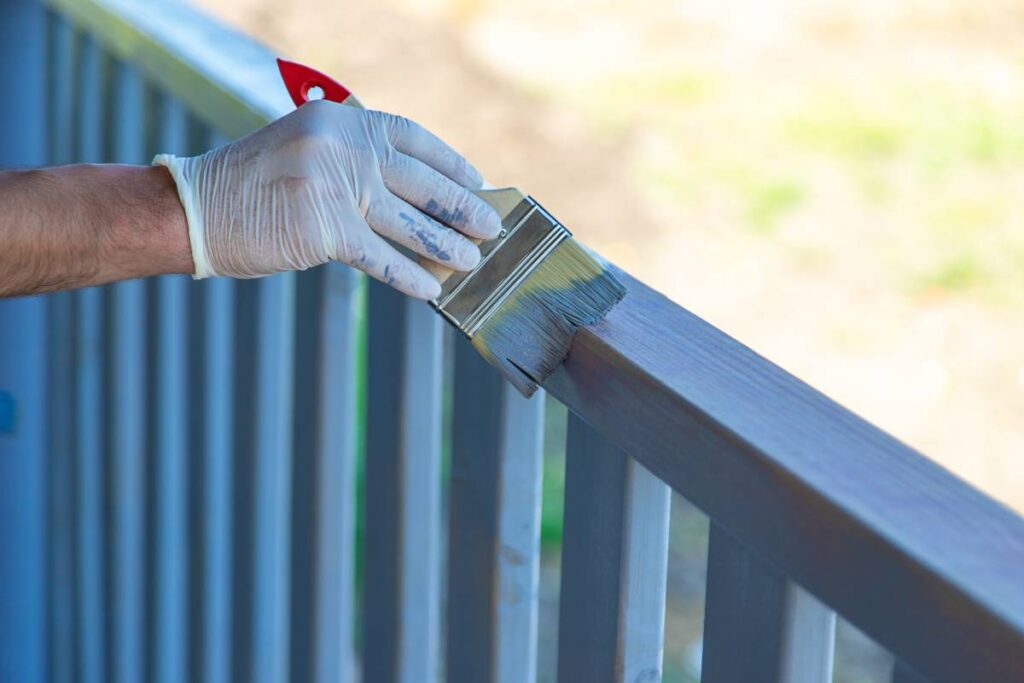
Brush Painting
Brush painting is one of the oldest and most traditional paint application methods. Brushes come in various sizes and shapes, such as flat, angled, and round, making them versatile for various tasks.
Advantages of Brush Painting
- Precision and Control: Brushes allow for detailed and precise application, making them ideal for small or intricate areas. For example, cutting in along edges, painting trims, or working on detailed furniture pieces is best accomplished with a brush.
- Versatility: Paint brushes can be used with nearly all types of paint, including latex, oil-based, and water-based paints. They are also suitable for working on different surfaces such as wood, metal, and textured walls.
- Cost-Effective: Brushes are typically the most affordable option compared to rollers and sprayers. They require minimal setup and cleanup, making them an economical choice for small projects.
- Low Waste: Brushes use less paint compared to rollers and sprayers, which helps reduce wastage.
Disadvantages of Brush Painting
- Time-Consuming: Painting with a brush can be slow, especially for large surfaces like walls or ceilings.
- Risk of Brush Marks: Without proper technique, visible brush strokes can affect the finish. Achieving a smooth, even coat requires experience and patience.
- Limited Coverage: Brushes are not the best choice for covering large areas efficiently.
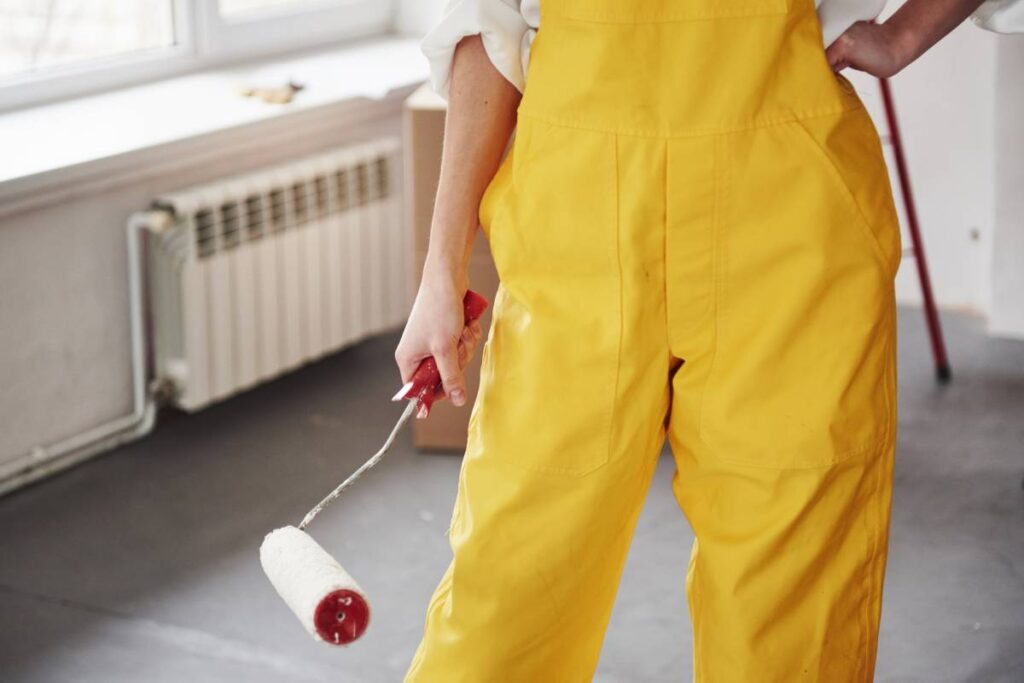
Roller Painting
Roller painting is a popular method for covering large, flat surfaces. Rollers come in different sizes and materials, such as foam, synthetic fibres, and natural fibres, making them suitable for various applications.
Advantages of Roller Painting
- Efficient for Large Surfaces: Rollers are excellent for painting large areas like walls, ceilings, and floors. They cover more surface area quickly compared to brushes.
- Smooth Finish: When used correctly, rollers can produce a smooth and even finish, especially on flat surfaces.
- Variety of Textures: Depending on the roller’s material and nap length, you can achieve different textures. For instance, longer naps are ideal for textured walls, while shorter naps work best on smooth surfaces.
- Less Labor-Intensive: Rollers make it easier to apply paint evenly, requiring less physical effort than brush painting for large areas.
Disadvantages of Roller Painting
- Limited Precision: Rollers are not ideal for detailed or intricate work. Edges, corners, and tight spaces require additional tools like brushes.
- Paint Splatter: Rollers can create splatter, which means additional time may be needed for masking and cleanup.
- Requires More Paint: Rollers tend to absorb more paint, leading to increased consumption compared to brushes.
- Setup and Cleanup: Using a roller involves more preparation, such as setting up a tray and ensuring even loading of paint. Cleaning a roller can also be time-consuming.

Spray Painting
Spray painting involves using a paint sprayer to apply paint in a fine mist. This method is commonly used for both professional and DIY projects, ranging from home interiors to furniture refinishing.
Advantages of Spray Painting
- Fast Application: Spray painting is the quickest method for covering large areas, making it ideal for big projects like painting walls, ceilings, fences, or even vehicles.
- Even Coverage: Sprayers provide a smooth, even coat without brush marks or roller textures. This makes them ideal for achieving a flawless finish on smooth surfaces.
- Versatility: Paint sprayers can be used for a wide range of projects, from painting furniture and cabinets to exterior walls and fences.
- Accessibility to Hard-to-Reach Areas: Sprayers can easily cover uneven surfaces, nooks, and crannies, which may be difficult to reach with brushes or rollers.
Disadvantages of Spray Painting
- High Initial Cost: Paint sprayers are more expensive than brushes and rollers, both in terms of equipment cost and the amount of paint used.
- Overspray and Waste: Sprayers produce a lot of overspray, which can lead to wasted paint and the need for extensive masking to protect surrounding areas.
- Setup and Cleanup: Using a sprayer requires significant preparation, including masking and setting up the machine. Cleaning the equipment after use is also a labour-intensive process.
- Skill Requirement: Spray painting requires practice to achieve an even coat and avoid drips or uneven coverage. Beginners may find it challenging to master.
Comparing the Methods
To determine which method is better, it’s helpful to compare brush painting, roller painting, and spray painting across several criteria:
| Criterion | Brush Painting | Roller Painting | Spray Painting |
|---|---|---|---|
| Precision | Excellent for details | Limited | Moderate |
| Speed | Slow | Moderate | Fast |
| Finish Quality | Can leave brush marks | Smooth on flat surfaces | Flawless on smooth areas |
| Ease of Use | Easy for small tasks | Easy to moderate | Requires skill |
| Setup Time | Minimal | Moderate | Extensive |
| Cleanup Time | Quick | Moderate | Time-consuming |
| Cost | Low | Moderate | High |
| Paint Wastage | Low | Moderate | High |
Best Use Cases for Each Method
When to Use a Brush
- Painting intricate details, trim, and corners.
- Working on small projects, such as furniture or crafts.
- Applying oil-based or speciality paints that require precision.
When to Use a Roller
- Painting large, flat surfaces like walls and ceilings.
- Covering textured surfaces with minimal effort.
- Achieving a smooth and consistent finish on medium to large projects.
When to Use a Sprayer
- Painting large areas quickly, such as exterior walls or fences.
- Refinishing furniture or cabinets where a flawless finish is needed.
- Covering surfaces with complex shapes or hard-to-reach areas.
Tips for Choosing the Right Method
- Assess the Project Scope: For small, detailed work, a brush is often the best choice. For large, flat surfaces, rollers are efficient. For very large or intricate projects, consider a sprayer.
- Consider the Surface: Smooth surfaces benefit from spray painting, while textured surfaces are better handled with rollers. Brushes work well on uneven or detailed surfaces.
- Factor in Your Budget: If cost is a concern, stick to brushes or rollers. Sprayers, while efficient, involve higher upfront costs.
- Think About Cleanup: If you want to minimize cleanup time, choose brushes or rollers. Sprayers require significant effort to clean properly.
Conclusion
There is no one-size-fits-all answer to the question of whether brush painting, roller painting, or spray painting is better. Each method has its advantages and disadvantages, and the best choice depends on your project’s requirements, the surface being painted, your budget, and your skill level. By understanding the strengths and limitations of each technique, you can select the method that will deliver the best results for your specific needs.
Whether you choose the precision of a brush, the efficiency of a roller, or the speed and smoothness of a sprayer, the key to success lies in proper preparation and technique.
The post Brush Paint, Roller Paint, Spray Paint: Which is Better? appeared first on hub cloud - All News updates .
]]>The post Melasma, Freckles, and Age Spots: Can They Be Removed? appeared first on hub cloud - All News updates .
]]>This article will delve into what melasma, freckles, and age spots are and why they occur, as well as explore various methods for their treatment and removal.
More to read:
Understanding Melasma, Freckles, and Age Spots
Before discussing treatment options, it’s important to understand what distinguishes these conditions.
Melasma
Melasma is a skin condition characterized by dark, irregular patches, often found on the face. It most commonly affects women, especially during pregnancy, due to hormonal changes. Melasma is also referred to as “the mask of pregnancy.” The condition results from an overproduction of melanin, the pigment responsible for skin colour, triggered by hormonal shifts, sun exposure, or even certain medications.
Key features:
- Brown or grey patches are typically found on the cheeks, forehead, and chin.
- Common in pregnant women or individuals on hormonal therapy or contraceptives.
- Aggravated by ultraviolet (UV) light exposure.

Freckles
Freckles are small, flat, circular spots that are usually lighter than melasma. They often develop in childhood and are more prominent in people with fair skin or those who have spent considerable time in the sun. Unlike melasma, freckles are not caused by hormonal changes but by the skin’s response to UV radiation. The amount of melanin produced in the skin increases in response to sunlight, causing small, concentrated pigment spots.
Key features:
- Small, light brown spots, often appear on sun-exposed areas like the face, shoulders, and arms.
- More common in people with light or fair skin.
- Increase in number and darkness with sun exposure, often fading in the winter.
Age Spots (Solar Lentigines)
Age spots, also known as liver spots or solar lentigines, are flat, brown, or black spots that usually appear in areas of the skin frequently exposed to the sun. They typically develop after the age of 40 but can appear earlier in people who have had significant sun exposure over their lifetime. Age spots are caused by a combination of UV exposure and the natural ageing process, where melanin builds up in certain areas of the skin.
Key features:
- Larger, flat spots, often darker than freckles.
- Typically appear on the face, hands, shoulders, and arms — areas most exposed to sunlight.
- Common in older adults but can occur earlier with significant sun damage.
Can Melasma, Freckles, and Age Spots Be Removed?
The short answer is yes — but with varying degrees of difficulty and long-term effectiveness. Let’s explore the available treatment options.
1. Topical Treatments
One of the first approaches to treating hyperpigmentation like melasma, freckles, and age spots is through topical creams and lotions. These products often contain ingredients that lighten the skin or reduce melanin production.
- Hydroquinone: Often considered the gold standard for lightening hyperpigmentation, hydroquinone decreases the amount of melanin in the skin. Available in over-the-counter and prescription strengths, it can be effective for melasma and age spots, though less so for freckles.
- Retinoids: Derived from Vitamin A, retinoids help by promoting skin cell turnover and fading dark spots over time. They can also prevent new spots from forming, making them a good long-term solution for preventing future hyperpigmentation.
- Vitamin C: As a powerful antioxidant, Vitamin C can brighten the skin and reduce the appearance of dark spots. It is commonly found in serums and creams and can be effective for mild pigmentation issues.
- Azelaic Acid: Known for its anti-inflammatory and brightening properties, azelaic acid is another option for treating melasma and age spots, though results may take several months to become noticeable.
- Kojic Acid and Liquorice Extract: Natural skin-lightening ingredients like kojic acid and liquorice extract can inhibit melanin production, leading to a gradual reduction in dark spots.
While topical treatments can be effective, they often require patience and persistence, as results can take weeks or months to become apparent. They are generally more effective for milder cases of hyperpigmentation and may not be sufficient for deeper pigmentation issues.
2. Chemical Peels

Chemical peels involve applying an acid solution to the skin to remove its outer layers. This can help fade dark spots, revealing fresher, more even-toned skin beneath.
- Glycolic Acid Peels: One of the most popular types of chemical peels, glycolic acid helps exfoliate the skin and reduce the appearance of pigmentation.
- TCA (Trichloroacetic Acid) Peels: TCA peels are more potent than glycolic peels and can target deeper pigmentation like melasma and age spots. However, they require longer recovery times and come with a higher risk of side effects, including scarring and post-inflammatory hyperpigmentation.
Chemical peels can be highly effective, particularly for age spots and melasma, but they carry some risks and require proper aftercare to avoid complications like infections or additional pigmentation issues.
3. Laser Treatments
Lasers are a powerful and increasingly popular method for treating hyperpigmentation. They work by targeting melanin directly, breaking up the pigment so that the body can naturally eliminate it.
- Intense Pulsed Light (IPL): IPL treatments use broad-spectrum light to target melanin in the skin, making them effective for age spots and melasma. However, IPL is not always suitable for darker skin tones as it may cause further pigmentation problems.
- Fractional Laser Resurfacing: This treatment targets both the surface and deeper layers of the skin to stimulate new collagen production and fade pigmentation. It can be effective for deeper melasma and age spots, but multiple sessions are usually required for the best results.
Laser treatments are generally considered safe, though they may cause temporary side effects like redness, swelling, and peeling. The cost of laser treatment can be high, and it often takes multiple sessions to see significant improvement.
4. Cryotherapy
Cryotherapy involves freezing dark spots with liquid nitrogen, causing the skin to blister and peel off, revealing new skin beneath. This method is particularly effective for age spots but is less commonly used for freckles or melasma.
Cryotherapy is a quick procedure and generally has minimal recovery time, though there is a slight risk of scarring or hypopigmentation (lightening of the skin) after treatment.
5. Microdermabrasion
Microdermabrasion is a non-invasive treatment that uses tiny crystals or a diamond tip to exfoliate the top layer of the skin. It is a gentler option compared to chemical peels and lasers but can still help fade superficial pigmentation issues like freckles and mild age spots.
Because it works on the surface of the skin, microdermabrasion is less effective for deep melasma but can improve overall skin tone and texture.

Preventing Recurrence
While many treatments can fade or remove melasma, freckles, and age spots, preventing their recurrence is equally important. Sun protection is essential in managing these conditions, as UV exposure can trigger or worsen hyperpigmentation.
- Daily Sunscreen: Use a broad-spectrum sunscreen with an SPF of at least 30, and reapply it every two hours when outside. Sunscreen is crucial even on cloudy days or during winter months, as UV rays can penetrate through clouds.
- Protective Clothing: Wearing hats, sunglasses, and protective clothing can shield your skin from UV damage.
- Avoid Tanning Beds: Tanning beds emit UV radiation that can exacerbate hyperpigmentation and increase the risk of skin cancer.
Final Thought
Melasma, freckles, and age spots are common forms of hyperpigmentation that can be distressing for those who experience them. While removal is possible, the effectiveness of treatments varies depending on the type and depth of pigmentation.
Options range from topical treatments to laser therapy, with each offering varying degrees of success. It’s essential to work with a dermatologist to determine the best course of action and to prioritize sun protection to prevent future spots from forming.
For those seeking professional cosmetic treatments, Kamol Cosmetic Hospital, one of the world’s leading cosmetic surgery hospitals, offers advanced procedures for hyperpigmentation and other skin concerns, ensuring safe and effective results.
4
The post Melasma, Freckles, and Age Spots: Can They Be Removed? appeared first on hub cloud - All News updates .
]]>The post Is Yellow Teeth Normal? Should I Make Them White? appeared first on hub cloud - All News updates .
]]>In reality, teeth naturally vary in colour and a range of factors contribute to this variation. But is it necessary to whiten yellow teeth?
In this article, we will explore the causes of yellow teeth, whether it’s normal to have them, and whether whitening is the best choice.
Why Are Teeth Yellow?
There are several reasons why teeth can have a yellow tint, and it doesn’t necessarily mean they are unhealthy. Let’s break down some of the most common causes:
1. Natural Enamel Color
The outermost layer of the teeth, known as enamel, is naturally semi-translucent. Underneath the enamel is a layer of dentin, which is typically yellowish in colour. Some people naturally have thinner enamel or thicker dentin, which can make their teeth appear more yellow. Genetics plays a significant role in the thickness and colour of the enamel, meaning that even with perfect oral hygiene, some people will always have teeth that lean toward yellow or off-white.
2. Aging
As we age, enamel wears down, exposing more of the yellow dentin underneath. This process is gradual but unavoidable. While yellow teeth in older adults are normal, this can sometimes make people self-conscious about their smile, leading them to seek whitening solutions.
3. Food and Drink Stains
Some foods and beverages are notorious for causing teeth stains. Coffee, tea, red wine, and certain fruits (like berries) contain pigments that can cling to enamel and cause discolouration over time. Additionally, acidic foods and drinks can erode enamel, making it easier for stains to set in. Even if you brush regularly, these foods and drinks can contribute to yellowing.

4. Smoking and Tobacco Use
Tobacco is one of the leading causes of yellow and stained teeth. The nicotine and tar in cigarettes settle into the tiny pores of the enamel, causing discolouration. These stains can be especially difficult to remove through regular brushing alone.
5. Poor Oral Hygiene
Failing to brush and floss regularly allows plaque and tartar to build up on teeth, which can lead to yellowing. Plaque, the soft sticky film on teeth, can harden into tartar if not removed, further contributing to discolouration. Poor dental hygiene can also lead to cavities and gum disease, which can affect both the appearance and health of your teeth.
6. Medications
Certain medications, especially during childhood when teeth are still developing, can cause teeth to appear yellow or even grey. For example, antibiotics like tetracycline can lead to permanent discolouration. Additionally, some antihistamines, blood pressure medications, and chemotherapy treatments can contribute to yellowing.
7. Fluorosis
Excessive fluoride intake during childhood can lead to a condition called fluorosis, which causes discolouration of the enamel. While typically mild and purely cosmetic, more severe cases can result in brown or yellow stains.
Is Having Yellow Teeth a Problem?
Having yellow teeth is not necessarily a problem from a health perspective. If your teeth are yellow due to genetics, ageing, or mild staining, they may still be perfectly healthy. However, in some cases, yellowing can be a sign of underlying oral health issues such as:
- Enamel Erosion: If your enamel is wearing down too quickly due to acid exposure or grinding, it can lead to increased tooth sensitivity and cavities.
- Poor Oral Hygiene: Yellow teeth may be a sign of plaque buildup, which can lead to gum disease and tooth decay if not addressed.
While yellow teeth aren’t always a cause for concern, if you notice other symptoms like tooth sensitivity, bad breath, or bleeding gums, it’s essential to see a dentist to rule out any potential issues.

Should You Whiten Your Teeth?
Now that we know why teeth can be yellow and that it’s often normal, the next question is whether or not you should whiten them. The decision to whiten your teeth is a personal one, based on aesthetics rather than necessity. Here are some factors to consider:
1. Cosmetic Confidence
If you feel self-conscious about the colour of your teeth, whitening may boost your confidence. A brighter, whiter smile is often associated with youth and health, and many people find that it improves their overall appearance. If yellow teeth are making you hesitant to smile or talk in social situations, whitening might be worth considering.
2. Potential Risks

Teeth whitening, whether done at home or professionally, is generally safe, but it does come with some risks. The most common side effect is tooth sensitivity. Whitening products can cause temporary sensitivity, especially in people who already have sensitive teeth. Additionally, overuse of whitening products can erode enamel over time, making teeth more vulnerable to cavities and sensitivity.
Some people may also experience gum irritation if the whitening agent comes into contact with the soft tissue in the mouth. It’s crucial to follow instructions carefully and consult with your dentist before starting any whitening regimen.
3. Effectiveness
Not all teeth whiten equally. Whitening is most effective on surface stains caused by food, drink, or smoking. Teeth that are yellow due to genetics, ageing, or medications may not respond as well to whitening treatments. In these cases, the results may be less dramatic, or you may need multiple treatments to achieve the desired outcome.
4. Cost
Teeth whitening can be done at home with over-the-counter products like whitening strips and gels or professionally by a dentist. The cost of these options can vary widely. Professional whitening treatments tend to be more expensive but are also more effective and longer-lasting. At-home kits are cheaper but may require more frequent use to maintain results.
Alternatives to Teeth Whitening
If whitening doesn’t seem like the right option for you, there are other ways to improve the appearance of your teeth:
1. Good Oral Hygiene
Brushing and flossing regularly can help prevent further yellowing. Using toothpaste specifically designed for whitening can also remove surface stains over time, though it may not produce dramatic results.
2. Dental Cleaning
Regular professional dental cleanings can remove plaque and tartar buildup, which contributes to yellowing. While cleanings won’t change the natural colour of your teeth, they can make your smile appear brighter.
3. Veneers or Bonding
For those with severe discolouration that doesn’t respond to whitening treatments, dental veneers or bonding may be a solution. Veneers are thin shells placed over the teeth to give them a white, even appearance, while bonding uses tooth-coloured resin to cover discoloured areas. These are more permanent solutions but come with higher costs.
Conclusion
Yellow teeth are normal for many people, and the underlying cause of the discolouration can vary. In most cases, yellow teeth aren’t a sign of poor health, and whether or not you should whiten them depends on your personal preferences and cosmetic goals.
If you’re considering whitening your teeth, it’s important to weigh the pros and cons, including the potential risks of sensitivity and enamel damage. Always consult with a dentist to determine the best and safest option for you.
Remember, the goal should always be healthy teeth first, and then aesthetic improvements can follow based on your comfort level. Yellow teeth don’t necessarily mean unhealthy teeth, and you don’t have to pursue whitening unless it will boost your confidence or make you feel better about your smile.
The post Is Yellow Teeth Normal? Should I Make Them White? appeared first on hub cloud - All News updates .
]]>The post Can Cats Get Heatstroke? How to Keep Cats Cool in Summer? appeared first on hub cloud - All News updates .
]]>In this guide, we’ll explore practical and easy-to-follow tips to help keep your cat cool in the summer, ensuring they stay safe and content as temperatures rise.
Can Cats Get Heatstroke?
Yes, cats can get heatstroke, just like humans and dogs. Heatstroke is a serious condition that happens when a cat’s body gets too hot and can’t cool down effectively. It can be dangerous and even life-threatening if not treated promptly.
What is Heatstroke?
Heatstroke, also known as hyperthermia, occurs when a cat’s body temperature rises above the normal range. For cats, a normal body temperature is around 38.1 to 39.2°C. When a cat’s body temperature goes above 39.4°C, it can be a sign of heatstroke.
Signs of Heatstroke in Cats
Cats are not as obvious in showing discomfort as dogs, so it’s important to know the signs:
- Panting: Unlike dogs, cats don’t usually pant. If you see your cat panting, it’s a sign they might be overheated.
- Excessive Thirst: Cats with heatstroke will drink more water than usual.
- Lethargy: A cat with heatstroke may become unusually tired or weak.
- Drooling: Excessive drooling can be a sign of heatstroke.
- Red or Pale Gums: Check your cat’s gums. If they are red, pale, or dry, it might indicate overheating.
- Vomiting or Diarrhea: These can also be symptoms of heatstroke.
- Unsteadiness or Seizures: Severe heatstroke can affect a cat’s nervous system, causing unsteady movements or seizures.
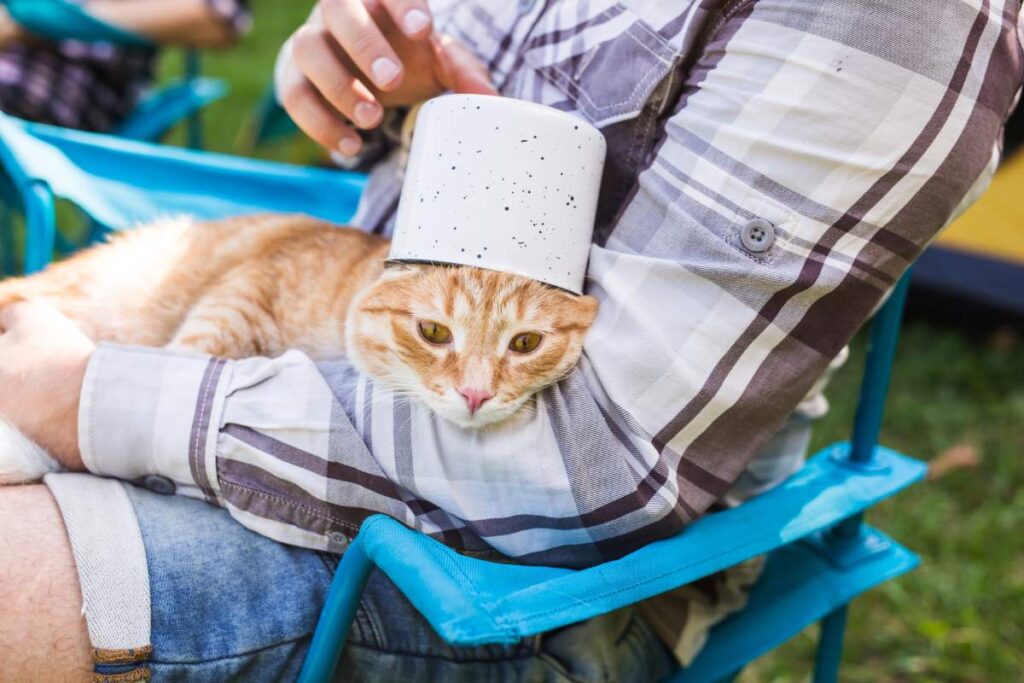
How Does Heatstroke Happen?
Heatstroke usually occurs when a cat is exposed to high temperatures for too long. This can happen in a variety of situations:
- Hot Weather: During summer months or in high temperatures, cats can overheat if they are outside without shade or access to water.
- Locked Cars: Never leave your cat in a parked car, even for a short time. The temperature inside can quickly become dangerously high.
- Indoor Heat: In very hot indoor environments, such as rooms with poor ventilation or no air conditioning, cats can also suffer from heatstroke.
How to Prevent Heatstroke
Here are some tips to keep your cat cool and prevent heatstroke:
- Provide Fresh Water: Always have fresh water available for your cat to drink.
- Create a Cool Space: Ensure your cat has a cool, shaded place to rest, especially during hot weather.
- Avoid Hot Cars: Never leave your cat in a car, even with the windows cracked open.
- Use Fans or Air Conditioning: If you don’t have air conditioning, a fan can help keep the air moving and cool down the environment.
- Limit Outdoor Time: During extreme heat, try to keep your cat indoors or limit their time outside.
What to Do if Your Cat Shows Signs of Heatstroke
If you suspect your cat has heatstroke, act quickly:
- Move Your Cat to a Cooler Area: Get them to a shaded or air-conditioned space.
- Offer Water: Give them water to drink, but don’t force them to drink.
- Cool Them Down Gradually: Use a damp cloth to gently cool their body. Avoid using ice or very cold water, as this can cause shock.
- Seek Veterinary Care: Contact your vet immediately. Heatstroke is a serious condition that needs professional treatment.
How to Keep Cats Cool in Summer
Summer can be a tough time for cats, especially if they’re not used to high temperatures. Keeping your cat cool and comfortable during the hot months is essential for their health and well-being. Here are some practical tips to help your feline friend stay cool:
1. Provide Fresh Water
Always have fresh, clean water available for your cat. Hydration is crucial in hot weather. Consider adding a few extra water bowls around the house or investing in a pet water fountain, which many cats find more appealing.
2. Create Cool Spots
Ensure your cat has access to cool, shaded areas where they can relax. You can create a cool spot by:
- Using Cooling Mats: Pet cooling mats are designed to stay cool without the need for refrigeration or electricity. They provide a comfortable place for your cat to lie down and cool off.
- Providing Shade: If your cat likes to lounge by a window, make sure there’s shade available to prevent direct sunlight from overheating them.
3. Use Fans and Air Conditioning
Fans and air conditioning can help regulate the temperature in your home.
- Fans: Place a fan in the room where your cat spends most of their time. A gentle breeze can help keep the air cool and comfortable.
- Air Conditioning: If you have air conditioning, ensure it’s set to a comfortable temperature. Cats generally prefer cooler environments, so aim for a temperature around 24°C.

4. Keep the Environment Cool
In addition to fans and air conditioning, you can take other steps to keep your home cool:
- Close Blinds or Curtains: Keeping blinds or curtains closed during the hottest part of the day can help reduce the amount of heat entering your home. Tinting your window can also filter out hot weather from the outside.
- Ventilation: Make sure your home is well-ventilated to allow for air circulation. Open windows in the early morning or late evening when it’s cooler outside. Or install plantation shutters to keep your house ventilating indoor air.
5. Offer Wet Treats
Wet food or treats can help with hydration and cooling. Consider giving your cat some chilled or room-temperature wet food as a special treat. You can also freeze small amounts of wet food in ice cube trays to create cooling treats.
6. Groom Regularly
Regular grooming helps keep your cat’s coat in good condition and can help them stay cool. Brush your cat frequently to remove excess fur and reduce the insulation effect of their coat.
7. Avoid Hot Cars
Never leave your cat in a parked car, even with the windows slightly open. The temperature inside a car can rise quickly, leading to dangerous conditions for your cat. Always ensure they are safely indoors or in a well-ventilated area.
8. Use Ice Packs Wisely
If your cat is comfortable with it, you can use ice packs to help cool them down. Wrap ice packs in a towel and place them near your cat’s resting area, ensuring they can choose to move away if they prefer.
9. Monitor Your Cat
Keep an eye on your cat’s behaviour during hot weather. If they seem lethargic, panting, or displaying other signs of heat distress, take immediate action to cool them down and consult your vet if needed.
10. Create a Summer Routine
Adjust your cat’s routine to fit the hotter weather. Encourage them to play during cooler parts of the day and avoid strenuous activities during peak heat hours.
Conclusion
Keeping your cat cool in the summer is essential for their well-being. By providing fresh water, creating comfortable and shaded spaces, and using tools like fans and cooling mats, you can help your cat beat the heat. Regular grooming, wet treats, and avoiding hot cars further contribute to their comfort.
With these practical steps, you can ensure that your feline friend enjoys a cool, comfortable summer and stays happy and healthy all season long.
The post Can Cats Get Heatstroke? How to Keep Cats Cool in Summer? appeared first on hub cloud - All News updates .
]]>The post Is it good to have green tea before bed? How many times must I drink green tea a day? Can I drink green tea on empty stomach? appeared first on hub cloud - All News updates .
]]>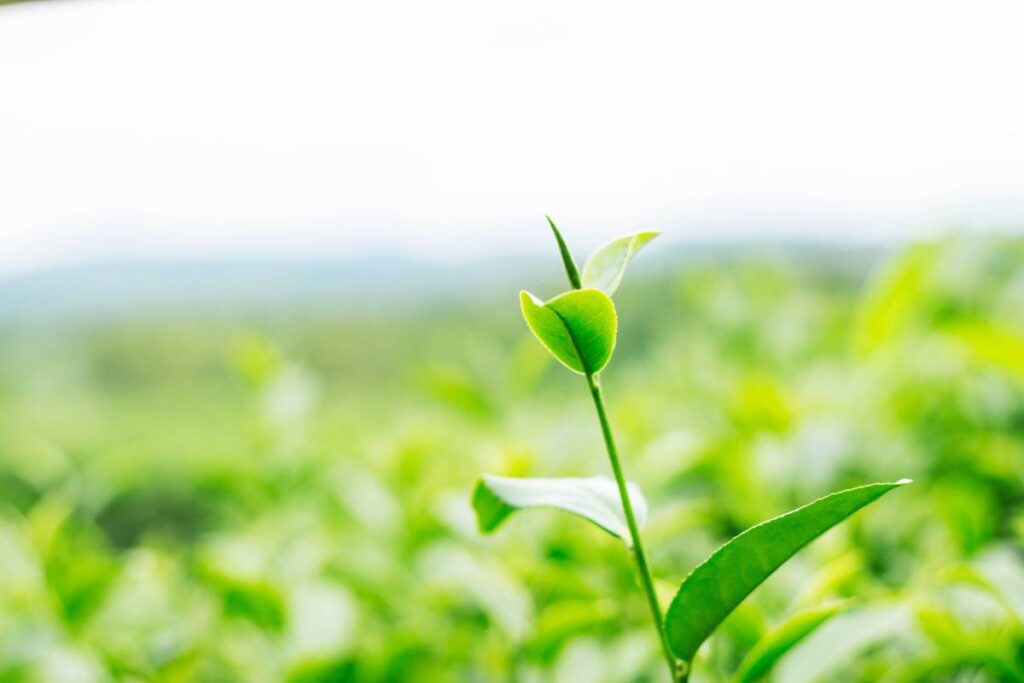
Is it good to have green tea before bed?
Is it beneficial to drink green tea before bedtime? Many people wonder about this, as green tea is known for its various health benefits. The answer depends on individual preferences and sensitivities.
Green tea contains caffeine, a natural stimulant that can affect sleep. However, the caffeine content in green tea is generally lower than that in coffee. If you’re sensitive to caffeine, it’s advisable to limit its intake, especially in the evening.
On the positive side, green tea contains L-theanine, an amino acid that has a calming effect. This can counteract the stimulating effects of caffeine, potentially promoting relaxation and better sleep. The combination of caffeine and L-theanine in green tea is believed to provide a more balanced and gentle energy boost compared to other caffeinated beverages.
Timing matters when it comes to consuming green tea before bed. It’s recommended to have it at least a few hours before bedtime to allow your body to metabolize the caffeine. Opting for decaffeinated green tea is another solution if you want to avoid caffeine altogether.
Additionally, green tea offers antioxidants called catechins, which have various health benefits. These antioxidants may contribute to overall well-being, supporting your body’s defenses against oxidative stress.
In summary, having green tea before bed can be beneficial for some, thanks to its unique combination of caffeine and L-theanine. However, individuals sensitive to caffeine should be mindful of their intake, considering either choosing decaffeinated green tea or enjoying it earlier in the day. The antioxidants in green tea can also contribute to your overall health. As with any dietary choice, it’s essential to listen to your body and adjust your habits based on how they impact your sleep and well-being.

How many times must I drink green tea a day?
How often should you drink green tea each day? The ideal frequency varies based on individual preferences and health goals. Generally, consuming two to three cups a day is considered a reasonable and beneficial amount.
Green tea is rich in antioxidants, particularly catechins, which offer various health advantages. Regular consumption may support heart health, boost metabolism, and enhance overall well-being. However, it’s crucial to balance the benefits with potential drawbacks.
While green tea provides health benefits, it also contains caffeine, a natural stimulant. Excessive caffeine intake can lead to issues like insomnia, jitteriness, or increased heart rate. Therefore, it’s advisable to moderate your daily consumption and consider factors like sensitivity to caffeine and overall health.
The timing of green tea consumption matters as well. Drinking it throughout the day, rather than in the evening, can help manage caffeine intake and avoid potential disruptions to sleep. Choosing decaffeinated green tea is an option if you’re looking to minimize caffeine effects.
It’s essential to listen to your body and adjust your green tea intake accordingly. If you’re sensitive to caffeine, you might prefer a lower daily consumption or opt for decaffeinated versions. Conversely, if you tolerate caffeine well, enjoying a few cups spread throughout the day can be a healthy habit.
Ultimately, the key is moderation and finding what works best for your individual needs and preferences. Pay attention to how your body responds to different amounts and adjust accordingly. A balanced approach to green tea consumption can provide the benefits of antioxidants without the potential drawbacks of excessive caffeine.

Can I drink green tea on empty stomach?
Certainly! Consuming green tea on an empty stomach is generally safe for many people. Green tea offers numerous health benefits, including antioxidants known as catechins, which can support overall well-being.
However, it’s important to consider individual factors. For some, drinking green tea on an empty stomach may cause mild stomach discomfort due to its potential acidity. If you have a sensitive stomach or experience digestive issues, you might find it helpful to have green tea with a meal.
Green tea contains caffeine, a natural stimulant, which can affect some individuals more strongly on an empty stomach. If you’re sensitive to caffeine, consider having a snack or waiting until after a meal to enjoy your green tea.
On the positive side, drinking green tea on an empty stomach may boost metabolism and provide a gentle energy lift. This can be beneficial for those looking to enhance their morning alertness. The combination of caffeine and L-theanine in green tea is believed to offer a more balanced and milder energy boost compared to other caffeinated beverages.
To maximize the benefits of green tea on an empty stomach, consider choosing a high-quality, loose-leaf green tea. This ensures you get the full spectrum of antioxidants and flavors without any added ingredients.
If you have concerns about caffeine, opt for decaffeinated green tea, which retains many of the health benefits without the stimulating effects. Additionally, spacing out green tea consumption throughout the day can help manage caffeine intake and avoid potential side effects.

Conclusion:
In the quest for a healthier lifestyle, moderate green tea consumption can be a positive choice. Whether for its antioxidants, metabolism boost, or calming effects, the key is understanding your body’s signals. So, sip mindfully and enjoy the well-being green tea can bring to your daily life.
The post Is it good to have green tea before bed? How many times must I drink green tea a day? Can I drink green tea on empty stomach? appeared first on hub cloud - All News updates .
]]>The post What do you need to know when buying a car in Australia? Costs associated with car ownership in Australia appeared first on hub cloud - All News updates .
]]>Regardless of your choice, buying a car ranks among the most significant investments you’ll make. It’s crucial to cover all your bases and ensure you’re fully satisfied and confident with your new vehicle, be it a medium SUV for suburban family life or a rugged 4×4 ute for work and weekend escapades.
In this guide, we provide you with a checklist of considerations to consider before purchasing a car, along with an overview of the various costs associated with car ownership in Australia.
What do you need to know when buying a car in Australia?
Buying a car in Australia can be an exciting but daunting experience, especially if you’re new to the process. There are several key factors to consider to ensure you make an informed decision and get the best value for your money. Let’s break it down into simple steps:

- Budget: Determine how much you can afford to spend on a car, taking into account not only the purchase price but also ongoing expenses like insurance, registration, fuel, and maintenance.
- Research: Research different car models to find one that meets your needs and fits your budget. Consider factors such as size, fuel efficiency, safety features, and reliability. Online reviews and comparison websites can be valuable resources.
- New vs. Used: Decide whether you want to buy a new or used car. While new cars come with the latest features and warranties, used cars are often more affordable. Keep in mind that used cars may have higher maintenance costs and a shorter lifespan.
- Dealer vs. Private Seller: Consider whether you want to buy from a dealership or a private seller. Dealerships offer convenience and may provide warranties and financing options, but private sellers may offer lower prices. Make sure to thoroughly inspect any used car before purchasing it from a private seller.
- Test Drive: Always test drive a car before making a purchase. Pay attention to how it handles, its comfort level, and whether it meets your driving needs. Don’t hesitate to ask questions about the car’s history and maintenance records.
- Vehicle History Check: Obtain a vehicle history report to check for any past accidents, damage, or outstanding finance on the car. This can help you avoid buying a car with hidden issues.
- Negotiation: Don’t be afraid to negotiate the price, especially when buying from a private seller or dealership. Do your research beforehand to know the fair market value of the car and be prepared to walk away if the price isn’t right.
- Finance Options: If you need financing, explore your options carefully. Shop around for the best interest rates and loan terms, and consider getting pre-approved for a loan before shopping for a car. Be aware of any additional fees or charges associated with the loan.
- Insurance: Arrange insurance coverage for your new car before taking ownership. Compare quotes from different insurance providers to find the best coverage at the most competitive price.
- Registration and Transfer: Once you’ve purchased the car, you’ll need to register it in your name with the relevant state or territory authority. This usually involves paying registration fees and transferring the vehicle title.
- Maintenance and Servicing: Keep up with regular maintenance and servicing to ensure your car remains in good condition and retains its value. Follow the manufacturer’s recommendations for oil changes, inspections, and other routine maintenance tasks.
- Know Your Rights: Familiarize yourself with your rights as a consumer when buying a car, including warranties, lemon laws, and consumer protection regulations. If you encounter any issues with your purchase, don’t hesitate to seek legal advice or assistance.
If you want to buy a car in Australia, just follow these steps and do your homework, and you’ll be good to go. Take your time, ask as many questions as you need, and make sure to prioritize your needs and budget. If you do so, you’ll find the perfect car for you and feel confident about your purchase.
Costs associated with car ownership in Australia
Aside from the initial cost of buying a car, there are six main expenses that can significantly impact your overall car ownership expenses. Let’s dive into these costs to get a clearer picture of what the average Aussie driver can anticipate spending on them annually.
Here’s a breakdown of the weekly average expenses for running a car, based on data from the Australian Automobile Association’s (AAA) December 2022 Transport Affordability Index:
- Fuel: $98.31
- Car loan costs: $155.96
- Car insurance: $31.67
- Maintenance & service: $31.48
- Registration & licensing: $30.17
- Total: $347.59
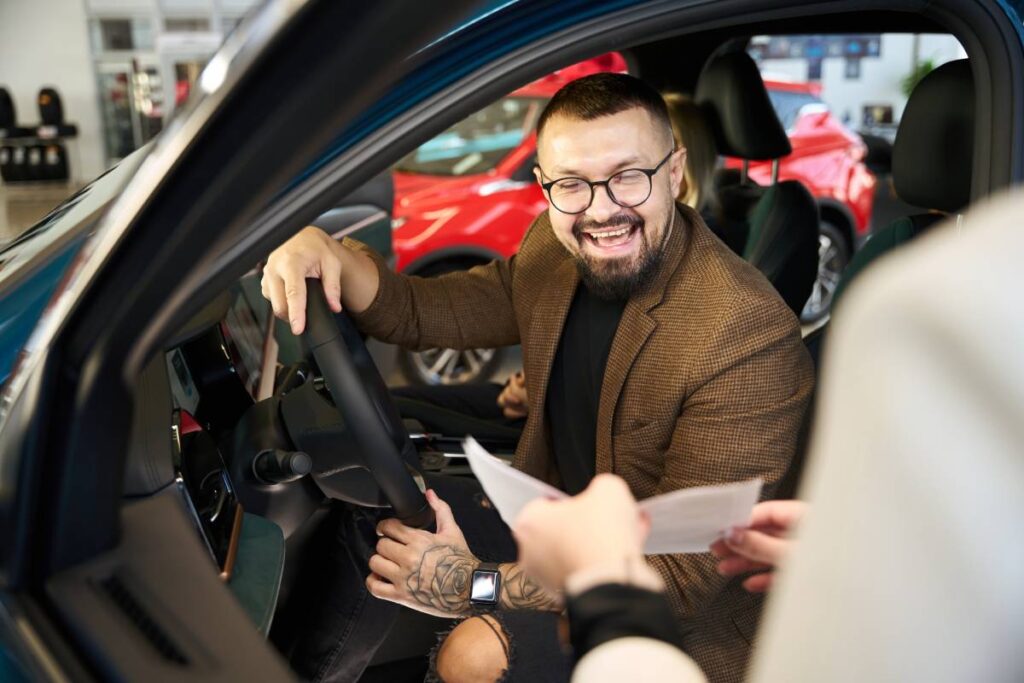
Fuel
Fuel is likely to be your most frequent car-related expense. Simply using your car consumes fuel, and most drivers find themselves refilling their tanks every couple of weeks. The Australian Competition and Consumer Commission (ACCC) reported an average petrol price of $1.77 per litre in the September 2022 quarter, up from $1.52 the year before. On average, the AAA found that a two-car household spends $98.31 weekly on fuel, totalling over $5,100 annually.
Savings tip: Utilize smartphone apps like PetrolSpy, GasBuddy, Fuel Map, and MotorMouth to find the cheapest fuel options nearby. Prices can vary significantly between stations, sometimes by as much as 20 cents!
Car loan costs
Car loans are another frequent expense, typically paid out weekly. The cost of car loans doesn’t differ much between cities assuming the same interest rate. Instead, factors influencing car loan rates include the car’s age and model, your credit history, financial status, and the lender itself. On average across the eight capital cities, car loan repayments can exceed $8,100 annually.
Savings tip: Explore various car loan products as interest rates can vary widely. Securing a loan with a favourable interest rate can help you pay less than the average figure.
Car Insurance
Car insurance is essential in Australia, with Compulsory Third Party (CTP) insurance being mandatory. It covers liability costs for injuries or death caused to others. However, it’s recommended to consider higher levels of coverage like:
- Third-party insurance (covers damage to other people’s property)
- Third-party fire and theft insurance (includes fire and theft protection for your car)
- Comprehensive insurance (highest level, covering all of the above plus damage to your car)
Premiums for car insurance vary based on factors such as your car, age, driving history, gender, suburb, and more. Shopping around for quotes from different providers each year can help save money. According to AAA data, the average weekly household cost of comprehensive car insurance ranges from $18.29 in Perth to $43.38 in Adelaide. This amounts to approximately $950 to over $2,200 annually, depending on the city.
Maintenance Costs and Servicing
Services and repairs are significant ongoing expenses of car ownership. Regular servicing is essential for your car’s functionality, and unexpected issues can arise, like tyre replacements or faulty air conditioners. Many new cars offer capped-price servicing, limiting service costs for a period.
Maintenance costs vary widely, including tyre replacements and other repairs. On average, households spend around $31.48 per week or $1,637 annually on maintenance. There’s a significant difference between cities, with Canberra having the highest weekly cost at $42.02 and Adelaide the lowest at $26.15.
Savings Tips: Consider using local mechanics, which can be cheaper than dealerships. Check their credibility through online reviews. Also, be aware that servicing costs can increase after certain mileage thresholds, typically around every 60,000 kilometres, depending on the car.

Registration & Licensing
To drive a car on public roads in Australia, it must be registered with your state or territory’s Department of Transport, and you must hold a valid driver’s license. Registration involves an upfront fee and ongoing annual or semi-annual payments. Driver’s licenses also require periodic renewal, typically every few years. Compulsory Third Party (CTP) car insurance premium is often included in the registration cost.
According to AAA’s report, the average annual registration, CTP, and licensing costs for a two-car Australian family are $1,606 in capital cities and $1,527 in regional areas. Costs vary significantly between cities, with Hobart households paying the least and Canberra households paying the most.
Savings Tip: Opt for annual registration payments to save money, but consider your car ownership plans for the year.
Depreciation
Cars are generally not considered good investments as they lose value over time. A new car loses up to 10% of its value the moment you drive it off the dealership lot, and depreciation continues from there. All cars depreciate, but some depreciate faster than others. You can calculate depreciation using a simple formula comparing the car’s new value to its current value.
As an example: New car value: $35,880 Current value: $23,700 Depreciation rate: 33.94%
Savings Tip: Reduce depreciation by regularly servicing and maintaining your car, keeping it clean, and storing it in a garage to minimize wear and tear from the environment.
How much do all these expenses tally up to?
Well, quite a bit. When you own and drive a car, these costs are part and parcel of the deal, and unfortunately, there’s no escaping them. You’ll have to foot the bill for fuel, registration, servicing, and accept that depreciation is inevitable, no matter how meticulously you care for your vehicle.
According to RACQ’s 2022 Running Costs Report, the average running expenses for various vehicle types in Queensland paint a stark picture:
- Light cars: $841.38 per month / $10,096.56 per year
- Small cars: $1,038.65 per month / $12,463.75 per year
- Medium cars: $1,317.17 per month / $15,806.05 per year
- People movers: $1,575.15 per month / $18,901.80 per year
- Electric cars: $1,465.73 per month / $17,588.72 per year
- SUV small: $994.50 per month / $11,934.05 per year
- SUV medium: $1,309.40 per month / $15,712.76 per year
- SUV large: $1,572.26 per month / $18,867.17 per year
- Terrain: $1,927.35 per month / $23,128.19 per year
- Light commercial 4×2: $1,413.39 per month / $16,960.69 per year
- Light commercial 4×4: $1,634.25 per month / $19,611.02 per year
So, just owning a car could set you back well over $10,000 annually, and that’s on top of the initial purchase cost. However, as seen above, the annual expenses can vary significantly depending on the type of vehicle. If you prioritize practicality and efficiency over aesthetics, it’s worth exploring cars with lower servicing costs and fuel consumption.
The post What do you need to know when buying a car in Australia? Costs associated with car ownership in Australia appeared first on hub cloud - All News updates .
]]>The post Is granite good for flooring? Are granite floors expensive? Are there any disadvantages of granite flooring? appeared first on hub cloud - All News updates .
]]>But when guests step into your home, what catches their eye first are the walls, ceiling, and flooring—the key trio of interior design. Surprisingly, flooring often gets less attention despite being the foundation of your home. Choosing the right flooring material is vital for creating a stunning home, and that’s where granite flooring shines.
Is granite good for flooring?
So, Is granite good for flooring? You might ask, and the answer is YES!
Granite is widely regarded as an exceptional flooring material, offering a blend of durability, aesthetics, and practicality that makes it a popular choice for homeowners and designers alike. As a natural stone, granite possesses inherent strength and hardness, making it highly resistant to wear and tear from daily foot traffic. This durability ensures that granite flooring maintains its integrity and appearance even in high-traffic areas, such as kitchens, hallways, and entryways, where other flooring materials might show signs of wear over time.
One of the key advantages of granite flooring is its remarkable resistance to scratches and stains. Unlike some other flooring options, granite is not easily damaged by furniture movement, pet claws, or dropped objects, making it an ideal choice for households with active lifestyles or pets. Additionally, granite’s resistance to moisture and spills makes it suitable for use in areas prone to spills or water exposure, such as bathrooms and kitchens. Properly sealed granite flooring provides an added layer of protection against moisture penetration, helping to maintain its longevity and appearance for years to come.
In addition to its practical benefits, granite flooring offers a wide range of aesthetic possibilities. Available in an array of colours, patterns, and finishes, granite allows homeowners to choose a flooring option that complements their interior design style and preferences. Whether opting for a classic, timeless look with neutral tones or making a bold statement with vibrant hues and striking patterns, granite flooring provides endless possibilities for customization and creativity.
While granite flooring offers numerous advantages, it’s essential to consider proper maintenance to ensure its longevity and beauty. Regular cleaning and sealing are necessary to protect the surface from stains, spills, and moisture infiltration. With proper care, granite flooring can remain a stunning and durable addition to any home for years to come, providing both practicality and aesthetic appeal that stands the test of time.

Are granite floors expensive?
Granite flooring can be relatively expensive compared to some other flooring options, but its cost can vary depending on several factors. The price of granite flooring is influenced by factors such as the quality of the granite, the size of the area to be covered, installation costs, and any additional customization or finishing options.
Let’s see how much granite flooring might cost you.
Estimating the cost of installing granite tile flooring
Granite flooring tile installation typically ranges from $300 to $5,000. For most homeowners, the average cost falls between $600 and $2,500. The final price depends on factors like the size of the area, the quality and type of granite chosen, and the complexity of the project. Many professionals offer a free consultation, but for very small projects, they may require a minimum fee of $300 to $500.
The cost breakdown generally includes both materials and labour. Premium-grade granite tiles can increase material costs, while larger tiles or expansive flooring areas can drive up labour expenses. Overall, granite tile flooring tends to be pricier compared to ceramic tiles and other flooring options.
Labour costs for installing granite floor tiles typically range from $35 to $45 per hour for natural stone flooring contractors. The total hours required depend on the size and intricacy of the job. For example, a standard 10-by-10 square foot granite tile floor usually takes around 10 hours to complete, amounting to labour costs of approximately $350 to $450. However, larger or more complex tile placements may increase this expense. Additionally, labour costs should cover necessary supplies like sealant, grout, and adhesives for the project.
Factors affecting the cost of installing granite tile flooring
Several factors influence the overall cost of installing granite tile flooring. Granite comes in various styles, shapes, and thicknesses, and each flooring project has its unique installation requirements.
Grade Granite is typically categorized into three grades, each with its own characteristics and cost range:
- Level 1 (Low-Grade Granite): Priced at $2 to $6 per square foot, these entry-level granite tiles are usually pre-fabricated and have a thinner cut of around three-eighths of an inch. While easier to install, they may require additional support such as plywood due to their lighter form.
- Level 2 (Mid-Grade Granite): These medium-tier tiles range from $5 to $15 per square foot and offer both a unique appearance and increased durability, with a thickness of about three-fourths of an inch. They constitute the most common type of granite tiles used for flooring.
- Level 3 and Above (High-Grade Granite): The finest quality granite, costing $15 to $40 per square foot, features an average thickness of three-fourths of an inch or more. High-grade granite is exceptionally durable and offers a wide range of unique designs and colour patterns.

Specialized colours and designs
Granite tiles are available in various colours and designs, with prices for unique options ranging from $10 to $40 per square foot. Special colours or finishes can increase the overall cost. Additionally, granite flooring comes in different finishes, including polished, honed, flamed, and brushed.
Custom borders and inlays
Adding custom borders or inlays to granite tile flooring incurs extra costs. Custom orders typically range from $200 to $600 for a 10-by-10-square-foot area, while large stone inlays like medallions can cost $600 to $3,000, depending on size and materials used.
Diagonal vs. straight installation
Granite tiles can be installed straight or diagonally, with diagonal installation typically incurring a labour uptick of around ten per cent due to the additional complexity of cutting tiles at 45-degree angles.
Flooring size
The size of the flooring space is a significant cost factor, with larger areas requiring more materials and labour. Many homeowners opt to use granite in smaller, high-traffic areas like foyers or hallways to create an impressive entrance while managing costs.
Additional factors influencing granite tile flooring installation costs
Several extra expenses and considerations may arise for homeowners, depending on the specifics of the project.
Floor preparation and furniture removal
Granite tiles cannot be installed directly over existing flooring. Costs for removing old tile flooring typically range from $2 per square foot, while replacing any necessary backer boards can cost between $5 to $8 per square foot. Additionally, resurfacing an uneven concrete subfloor may incur expenses of $3 to $10 per square foot. Furniture removal and replacement by a professional typically add around $0.20 per square foot to the overall cost, although homeowners can opt to move the furniture themselves before installation.
Sealing
While granite is highly durable, it is vulnerable to staining. To protect against stains, professionals apply a heavy-duty sealant after laying the tiles. This step may be included in the initial estimate, but if not, expect additional costs of $50 to $100 for materials and labour. Yearly reapplication of sealant is recommended for optimal protection. Homeowners can choose to purchase sealant themselves, priced between $15 to $50 per container, and perform the sealing process independently to save on costs.
Material delivery
Granite tiles are heavy and can be challenging to transport. Home delivery typically incurs fees ranging from $50 to $150, an aspect to consider for DIY projects. However, reputable flooring experts often include material delivery as part of their service at no extra charge.
DIY versus professional installation
Taking on the installation yourself can save $350 to $450, but it carries certain risks. Granite tiles are heavy and require precise installation techniques to avoid damage. Unless experienced with tile flooring and natural stones, it’s generally advisable to hire a professional to ensure proper measurements and installation. Poor workmanship can detract from the floor’s overall aesthetic appeal, potentially leading to costly repairs.

Are there any disadvantages of granite flooring?
While granite flooring offers numerous benefits, there are also some potential disadvantages to consider:
- Cost: Granite flooring can be relatively expensive compared to other flooring options such as ceramic tiles or vinyl. The initial investment for materials and installation may be higher, which could be a drawback for those with budget constraints.
- Weight: Granite tiles are heavy, which can make handling and installation more challenging. This weight may require additional structural support in some cases, especially for upper floors or existing buildings not designed to bear such loads.
- Porosity: Despite its durability, granite is a porous material, which means it can absorb liquids if not properly sealed. This makes it susceptible to staining from spills if not maintained and sealed regularly.
- Coldness: Granite flooring can feel cold underfoot, especially in colder climates or during winter months. While this might not be an issue for some, it could be uncomfortable for those who prefer warmer flooring surfaces.
- Hardness: While granite’s hardness is a benefit in terms of durability, it can also be a drawback in terms of comfort. Standing on granite for extended periods, especially without supportive footwear, may lead to discomfort or fatigue.
- Maintenance: While granite is relatively low-maintenance compared to some other flooring materials, it still requires regular cleaning and sealing to preserve its appearance and longevity. Failure to maintain granite flooring properly could lead to deterioration or staining over time.
- Limited Design Options: While granite comes in a variety of colours and patterns, natural stone may not offer as much versatility in design compared to some synthetic flooring materials. This limitation could be a drawback for those seeking highly customized or unique flooring options.
Considering these potential disadvantages alongside the benefits of granite flooring can help homeowners make informed decisions about whether it’s the right choice for their needs and preferences.
Final note
When opting for granite flooring, it’s crucial to pick the appropriate finish based on whether it’s for indoor or outdoor use. For outdoor spaces like terraces, durability and slip resistance are key due to exposure to sun, rain, and frost. A flamed finish granite is ideal here, creating a slightly rough surface with a glazed appearance, perfect for outdoor durability.
For outdoor granite floors, opt for colours like grey or cream to minimize stains, as non-slip textures tend to gather dirt more easily.
Indoors, polished and smooth matt finishes are recommended for granite floors as there’s no risk of slipping. These finishes enhance the natural beauty of the stone, adding brightness and elegance to spaces like kitchens or living rooms. Cleaning indoor granite floors is simple—just use water and a neutral detergent.
The post Is granite good for flooring? Are granite floors expensive? Are there any disadvantages of granite flooring? appeared first on hub cloud - All News updates .
]]>The post What is the most expensive dish in China? What are spicy Chinese foods? What are Chinese hot foods? appeared first on hub cloud - All News updates .
]]>What is the most expensive dish in China?

In China, the most expensive dish is often associated with a rare and highly sought-after delicacy called Bird’s Nest Soup. This luxurious culinary creation is crafted from the nests of swiftlets, a type of bird found in Southeast Asia. These nests are meticulously built using the bird’s saliva, resulting in a gelatinous texture.
High in demand due to its perceived health benefits and rarity, Bird’s Nest Soup has earned its reputation as a symbol of prestige and opulence in Chinese cuisine. The harvesting process is challenging and labor-intensive, contributing to its exorbitant price.
Prized for its supposed nutritional value and collagen content, Bird’s Nest Soup is believed to promote skin health and boost the immune system. Despite its steep cost, this dish remains a coveted indulgence for those who can afford it.
The intricate and time-consuming process of collecting the swiftlet nests adds to the dish’s exclusivity. Harvesters must navigate treacherous caves or cliffs to access the nests, a task that requires both skill and courage. The delicate and meticulous cleaning of the nests further emphasizes the craftsmanship involved in preparing this luxurious soup.
Beyond its nutritional qualities, the rarity of Bird’s Nest Soup contributes significantly to its high price tag. The limited availability of the swiftlet nests, combined with the risks and challenges associated with their collection, creates a niche market for this delicacy.
In Chinese culture, the consumption of Bird’s Nest Soup is often associated with celebrations and special occasions. Its presence on a menu signifies a commitment to providing the finest and most extravagant dining experience. Many consider it a status symbol, reflecting prosperity and affluence.
Despite the hefty price, enthusiasts and connoisseurs continue to indulge in Bird’s Nest Soup, viewing it as a unique and unparalleled gastronomic experience. Its significance extends beyond mere sustenance, embodying a blend of tradition, craftsmanship, and the pursuit of culinary excellence.
In conclusion, the most expensive dish in China is the esteemed Bird’s Nest Soup, celebrated for its rarity, labor-intensive production, and perceived health benefits. This luxurious delicacy stands as a symbol of prestige in Chinese cuisine, capturing the essence of opulence and culinary refinement.
What are spicy Chinese foods?

Spicy Chinese foods are renowned for their bold flavors and fiery kick. Chili peppers, a staple ingredient, are used generously to create dishes that cater to those with a penchant for heat. Szechuan cuisine, originating from the Sichuan province, is particularly famous for its intense spiciness.
One iconic spicy dish is Mapo Tofu, featuring tofu cubes bathed in a spicy, numbing sauce made with chili bean paste and Szechuan peppercorns. The combination of heat and numbing sensation makes it a flavorful experience.
Hot Pot is another beloved choice, allowing diners to cook an assortment of ingredients like meats, vegetables, and noodles in a communal pot of simmering, spicy food?, hot foods? spicy broth. Variations exist, with different regions putting their unique spin on the dish.
Kung Pao Chicken, hailing from the Szechuan province, features tender chicken, peanuts, and vegetables tossed in a spicy, sweet, and tangy sauce. The inclusion of dried red chilies elevates the heat level, providing a memorable taste.
Chongqing Hot Chicken is a spicy fried chicken dish originating from Chongqing, known for its fiery red appearance due to the abundant use of dried red chilies. The crispy exterior and spicy coating make it a popular choice among spice enthusiasts.
Spicy Sichuan Noodles are a simple yet satisfying option, featuring noodles drenched in a spicy sauce made with chili oil, soy sauce, and Szechuan peppercorns. It’s a quick and flavorful dish that highlights the region’s love for bold flavors.
Dandan Noodles, originating from Sichuan, consist of noodles topped with a spicy, savory sauce, minced meat, and green onions. The combination of textures and flavors makes it a well-loved street food option.
Cumin Lamb, a dish from Xinjiang cuisine, features succulent lamb seasoned with cumin and other spices. The bold flavors and fiery kick make it a favorite among those seeking a spicy culinary adventure.
Ma La Xiang Guo, a dish translated as “spicy numbing stir-fry,” allows diners to customize their meal by choosing from an array of ingredients like meats, vegetables, and tofu, which are then stir-fried in a spicy and numbing sauce.
Spicy Chinese foods cater to a range of spice preferences, from mildly hot to intensely fiery. These dishes showcase the diverse regional influences within Chinese cuisine, each contributing its unique twist to the world of spicy flavors. Whether it’s the numbing heat of Szechuan peppercorns or the fiery kick of chili peppers, spicy Chinese foods offer a vibrant and exhilarating culinary experience.
What are Chinese hot foods?

Chinese hot foods are known for their bold flavors and spicy kick, often incorporating chili peppers for that fiery taste. Szechuan cuisine, originating from the Sichuan province, is particularly famous for its intense spiciness.
One popular spicy dish is Mapo Tofu, featuring tofu cubes in a spicy, numbing sauce made with chili bean paste and Szechuan peppercorns, providing a unique and flavorful experience.
Hot Pot is another beloved choice, allowing diners to cook meats, vegetables, and noodles in a communal pot of simmering, spicy broth. Different regions put their spin on this dish, adding diverse elements to the overall flavor.
Kung Pao Chicken, from Szechuan, includes chicken, peanuts, and vegetables in a spicy, sweet, and tangy sauce. Dried red chilies elevate the heat level, delivering a memorable taste.
Chongqing Hot Chicken, originating from Chongqing, is known for its fiery red appearance due to the abundant use of dried red chilies. The crispy exterior and spicy coating make it a popular choice among spice enthusiasts.
Spicy Sichuan Noodles feature noodles in a sauce made with chili oil, soy sauce, and Szechuan peppercorns. It’s a quick and flavorful dish that highlights the region’s love for bold flavors.
Dandan Noodles, from Sichuan, consist of noodles topped with a spicy, savory sauce, minced meat, and green onions, offering a delicious street food option.
Cumin Lamb, from Xinjiang cuisine, features succulent lamb seasoned with cumin and other spices, providing bold flavors and a fiery kick.
Ma La Xiang Guo, translated as “spicy numbing stir-fry,” lets diners customize their meal with meats, vegetables, and tofu, stir-fried in a spicy and numbing sauce.
Chinese hot foods cater to various spice preferences, offering dishes with mild heat to intense spiciness. These dishes showcase diverse regional influences, each contributing a unique twist to the world of spicy flavors. Whether it’s the numbing heat of Szechuan peppercorns or the fiery kick of chili peppers, Chinese hot foods promise a vibrant and exhilarating culinary experience.
Conclusion:
In the heart of China’s culinary offerings lies the exclusivity of Bird’s Nest Soup, a symbol of prestige and culinary finesse. On the other end of the spectrum, the spice-laden realms of Szechuan and beyond paint a vivid picture of bold flavors and intense culinary experiences. Together, these elements encapsulate the rich tapestry of China’s most expensive, spicy, and hot dishes, offering a journey through luxury and spice in every bite.
The post What is the most expensive dish in China? What are spicy Chinese foods? What are Chinese hot foods? appeared first on hub cloud - All News updates .
]]>The post Empathy and team building. Adaptability and flexibility. Time management and organization. appeared first on hub cloud - All News updates .
]]>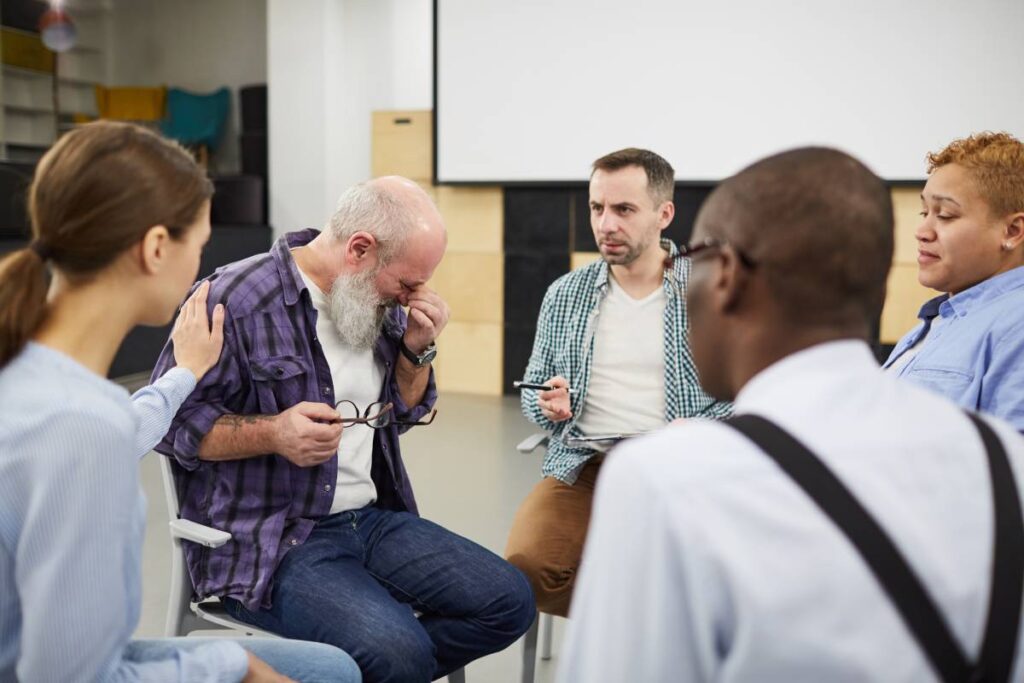
Empathy and team building.
Empathy and team building are two essential elements that contribute to the success and effectiveness of any group or organization. These concepts are intertwined, as empathy forms the foundation for strong team connections, fostering a collaborative and supportive environment.
Empathy, simply put, is the ability to understand and share the feelings of others. In a team setting, it means recognizing and appreciating the perspectives, emotions, and needs of each team member. When team members demonstrate empathy, it creates a sense of belonging and trust, forming the basis of a cohesive team.
Building empathy within a team involves active listening and open communication. Team members should be encouraged to express their thoughts and feelings without fear of judgment. This open dialogue allows individuals to better understand each other’s unique experiences and challenges, ultimately strengthening the bonds within the team.
Empathy also plays a crucial role in conflict resolution. When conflicts arise, team members who can empathize with one another are better equipped to find mutually beneficial solutions. By understanding each other’s viewpoints, team members can work together to address issues and move forward collaboratively.
Team building, on the other hand, is the process of creating a group of individuals who work together cohesively to achieve common goals. Effective team building involves various activities and strategies aimed at enhancing communication, trust, and collaboration among team members.
One popular method of team building is engaging in team-building exercises and activities. These can range from simple icebreakers to more complex problem-solving challenges. The goal is to encourage teamwork, promote communication, and develop a sense of camaraderie among team members. These activities provide opportunities for individuals to discover each other’s strengths, weaknesses, and working styles, fostering a better understanding of how to collaborate effectively.
Another important aspect of team building is establishing a shared vision and goals. When team members are aligned with a common purpose, they are more motivated and focused on achieving collective success. Clear communication of objectives ensures that everyone is on the same page, reducing confusion and promoting a sense of unity within the team.
Effective team building also involves recognizing and celebrating individual and team achievements. Acknowledging accomplishments, both big and small, fosters a positive and supportive team culture. This positive reinforcement encourages team members to continue working collaboratively and reinforces the value of their contributions.
In summary, empathy and team building go hand in hand to create a harmonious and productive team environment. By cultivating empathy, team members can better understand and appreciate each other, leading to stronger interpersonal relationships. Simultaneously, effective team building practices establish a foundation for collaboration, communication, and goal achievement. Together, these elements contribute to the overall success and satisfaction of the team, promoting a workplace where individuals thrive and collectively reach their full potential.

Adaptability and flexibility.
Adaptability and flexibility are key qualities that empower individuals and organizations to navigate the ever-changing landscape of life and work. In simple terms, adaptability refers to the ability to adjust to new conditions, while flexibility involves being open and responsive to change. These two traits are like dynamic companions, supporting resilience and success in both personal and professional realms.
Being adaptable means embracing change and viewing it as an opportunity for growth rather than a hindrance. Life is unpredictable, and circumstances can shift unexpectedly. Individuals who possess adaptability are better equipped to handle these shifts, adjusting their mindset and strategies to meet new challenges. It’s about being open-minded and willing to learn from experiences, recognizing that change is a constant part of life.
Flexibility, on the other hand, involves the willingness to bend without breaking. It means being open to different ideas, approaches, and perspectives. Flexible individuals understand that not everything goes according to plan, and they are comfortable adjusting their course when necessary. This quality allows for a more fluid response to changing situations, fostering innovation and creativity.
In the professional sphere, adaptability and flexibility are highly sought after. As industries evolve and technology advances, employees who can adapt to new tools and methodologies are invaluable. Employers appreciate individuals who can pivot when needed, bringing fresh ideas and problem-solving skills to the table. Moreover, in a rapidly changing job market, individuals with these qualities are more likely to thrive and succeed in diverse roles.
Adaptability and flexibility are closely linked to resilience. Resilient individuals bounce back from setbacks, viewing challenges as opportunities to learn and grow. The ability to adapt enables individuals to overcome obstacles and find alternative solutions, while flexibility allows for the exploration of new approaches.
Cultivating adaptability and flexibility involves developing a positive and open mindset. It’s about embracing change rather than resisting it and understanding that challenges are a natural part of life. Setting realistic expectations and being open to learning from different experiences contribute to building these qualities.
In a team or organizational context, adaptability and flexibility are crucial for success. Teams that can adapt quickly to changing priorities or unexpected challenges are more likely to achieve their goals. Collaboration is enhanced when team members are open to trying new approaches and adjusting their strategies based on evolving circumstances.
To foster adaptability and flexibility, organizations can provide training programs that encourage a growth mindset and emphasize the importance of continuous learning. Creating a supportive and inclusive work culture also plays a role, as individuals are more likely to embrace change when they feel supported by their peers and leadership.
In conclusion, adaptability and flexibility are essential life skills that contribute to personal and professional success. Embracing change, being open to new ideas, and maintaining a positive mindset are key elements in developing these qualities. Whether facing challenges in the workplace or navigating the complexities of life, individuals and organizations that prioritize adaptability and flexibility are better equipped to thrive in an ever-changing world.
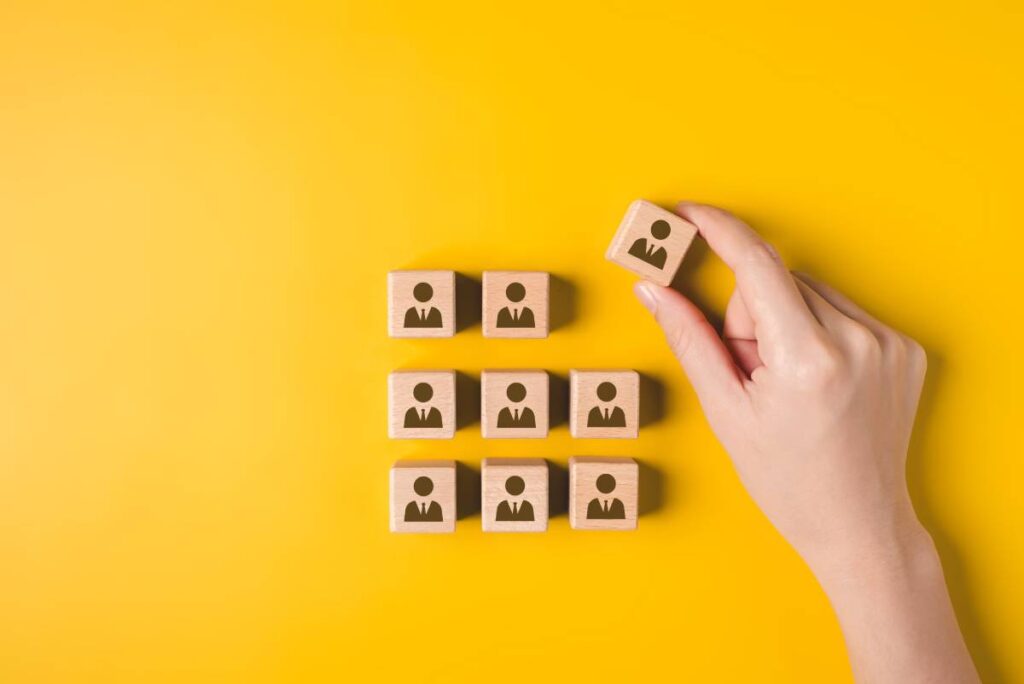
Time management and organization.
Time management and organization are fundamental skills that empower individuals to make the most of their time, enhance productivity, and reduce stress. In simple terms, time management is the practice of allocating time to tasks effectively, while organization involves structuring and arranging activities in a systematic way. Together, these skills form the backbone of efficiency and success in both personal and professional spheres.
Time Management:
Time is a finite resource, and effective time management ensures that it is utilized wisely. This involves setting priorities, planning tasks, and allocating time based on their importance. A key aspect of time management is the ability to distinguish between urgent and important tasks. Urgent tasks demand immediate attention, while important tasks contribute to long-term goals.
One popular time management technique is the Eisenhower Matrix, which categorizes tasks into four quadrants: urgent and important, important but not urgent, urgent but not important, and neither urgent nor important. This framework helps individuals prioritize and focus on tasks that align with their goals, preventing them from being overwhelmed by less critical activities.
Another crucial aspect of time management is avoiding procrastination. Procrastination can lead to increased stress and a backlog of tasks, affecting overall productivity. Breaking larger tasks into smaller, more manageable parts and setting specific deadlines can help combat procrastination and make progress more achievable.
Organization:
Organization involves creating systems and structures to streamline tasks and information. This applies to physical spaces, digital files, and daily routines. An organized workspace, whether physical or digital, contributes to a clear and focused mind. It reduces the time spent searching for items or information and promotes a more efficient workflow.
Creating to-do lists and schedules is a simple yet effective organizational tool. Lists help individuals visualize their tasks and provide a sense of accomplishment as items are checked off. Schedules, whether daily, weekly, or monthly, provide a roadmap for allocating time to specific activities, ensuring a balanced and manageable workload.
Digital tools and apps can also aid in organization. Calendar apps, task management tools, and note-taking applications can help individuals stay on top of deadlines and appointments. These tools serve as virtual assistants, sending reminders and notifications to keep individuals on track.
The Synergy of Time Management and Organization:
Time management and organization work synergistically to optimize productivity. Effective time management relies on an organized approach to tasks, ensuring that activities are planned and executed efficiently. Conversely, organization benefits from good time management by reducing clutter, preventing overwhelm, and allowing individuals to focus on high-priority tasks.
These skills are particularly valuable in the workplace. Employers appreciate individuals who can manage their time effectively, meet deadlines, and contribute to a well-organized work environment. As businesses operate in dynamic and fast-paced environments, employees with strong time management and organizational skills are better equipped to handle the demands of their roles.
Developing Time Management and Organization Skills:
Developing these skills involves creating habits and adopting strategies that align with personal preferences and work styles. Experimenting with different methods, such as the Pomodoro Technique for time management or the KonMari method for organization, can help individuals discover what works best for them.
In conclusion, time management and organization are foundational skills that contribute to personal and professional success. Embracing these skills allows individuals to make the most of their time, reduce stress, and achieve their goals in a systematic and efficient manner. Whether applied to daily tasks or long-term projects, the combination of effective time management and organization lays the groundwork for a more balanced and fulfilling life.

Conclusion:
In the grand symphony of life, the melody of success finds its rhythm in the harmonious interplay of time management and organization. As we journeyed through the corridors of prioritization, task structuring, and the seamless integration of these skills, their collaborative influence on personal and professional landscapes became evident. Like twin pillars, time management and organization stand as beacons, illuminating the path to efficiency, reducing the burden of chaos, and ultimately paving the way for a life well-lived. As individuals embrace these foundational skills, they equip themselves not only to navigate the currents of change but to thrive in the ever-evolving tapestry of existence.
The post Empathy and team building. Adaptability and flexibility. Time management and organization. appeared first on hub cloud - All News updates .
]]>The post Is camping common in Australia? Is it legal to camp anywhere? How much do campsites cost in Australia? appeared first on hub cloud - All News updates .
]]>If you’re considering a camping adventure Down Under, you may have questions about how common it is, if there are any restrictions on where you can camp, whether or not it is safe, how much it will cost to stay on a campsite, and most important of all: the wildlife you may encounter while you’re out there!
Want to learn more about the viability of camping in Australia? Read on and we’ll tell you everything you need to know.
Pack your mozzie spray and let’s get on with it…

Is Camping Common in Australia?
So, is camping fairly common in Australia? Or do the locals choose to stay indoors, away from all the creepy crawlies?
Believe it or not, but camping is a beloved pastime in Australia, cherished by both locals and tourists alike.
The country’s vast and diverse landscapes offer countless opportunities for memorable camping adventures, ranging from sprawling coastal sites to national parks, and luscious outback regions.
Australians have a deep appreciation for the great outdoors and never shy away from an opportunity to get in touch with nature. It will take much more than some crocs, snakes, and poisonous spiders to keep an Aussie from going walkabout, mate.

Is It Legal to Camp Anywhere in Australia? Is It Safe?
Camping regulations in Australia vary depending on the state or territory. While there are many designated camping areas, it’s important to understand the rules and restrictions that apply (so you don’t get yourself into trouble – or worse – end up somewhere incredibly dangerous by mistake). Here are some key points to consider:
- Designated Camping Areas: many camping areas across Australia require permits or fees. National parks, state forests, and private campgrounds often provide designated sites with facilities such as toilets, fire pits, and picnic tables. Everything you need for a quality camping vacation.
- Free Camping: there are also opportunities for free camping in certain areas, commonly referred to as “bush camping” or “wild camping.” However, it’s important to check local regulations, as restrictions and time limits may apply.
- Safety Considerations: when camping in remote areas, it’s essential to be prepared and practice safety measures. Inform others of your plans, carry sufficient supplies, be aware of fire restrictions, and familiarise yourself with local wildlife and potential hazards.

How Much Do Campsites Cost in Australia?
The cost of campsites in Australia can vary depending on location, facilities provided, and whether or not it’s a private or public campground. Here’s an overview:
- Public Campgrounds: prices typically range from $10 to $50 per night for adults, with additional fees for children, vehicles, and powered sites. National parks and state forests often offer affordable camping options as well.
- Private Campgrounds: prices can vary significantly, ranging from around $20 to $200 per night, depending on the amenities and services available, such as hot showers, laundry facilities, and powered sites with static caravans.

Are Critters Common When Camping in Australia?
Australia is known for its unique wildlife (to put it bluntly), and encountering critters while camping is not uncommon. Here are some key points to consider:
- Insects and Spiders: mosquitoes, flies, ants, and spiders are common in outdoor environments. It’s advisable to bring insect repellent, keep food stored securely, and shake out shoes or clothing before use.
- Snakes and Wildlife: while encounters with snakes and wildlife are relatively rare, it’s essential to be cautious and avoid disturbing their natural habitats. Familiarise yourself with local wildlife and follow any safety guidelines or precautions provided.

Is Camping Better with a Vehicle?
Camping with a vehicle offers numerous advantages, providing flexibility, convenience, and the ability to access remote locations with ease. Let’s elaborate:
- Flexibility: with a vehicle, you have the freedom to explore different camping areas and easily move between destinations.
- Storage and Comfort: vehicles allow you to carry camping gear, food, and other essentials more conveniently. You can also have a sheltered space for sleeping and protection from the pests and the elements.
- Accessibility: having a vehicle enables you to reach more remote camping spots that may not be easily accessible by public transportation.

What Is a Rooftop Tent, and Are They Worth It?
While on the subject of camping with a vehicle, what is a rooftop tent?
A rooftop tent is a popular camping accessory for vehicles (namely 4x4s) in Australia, offering a unique camping experience. Here are some key points to consider if you’re thinking about buying one:
- Rooftop tents are installed on top of vehicles, providing a comfortable and elevated sleeping area. Perfect if you are anxious about snakes and insects.
- The benefits include having an easy setup, protection from the elements and ground-dwelling critters, and improved views from an elevated position.
- They are particularly suitable for off-road adventures and camping in remote locations.
- For frequent campers or those seeking a convenient and elevated sleeping arrangement when they’re out on the road, we recommend that you buy a rooftop tent.

Conclusion
Camping is a widely common and cherished activity in Australia, with a diverse range of camping options available across the country.
- While camping regulations vary, understanding the rules and safety considerations is essential for a positive experience.
- Campsite costs vary depending on location and amenities. Critters, while present, can be managed with proper precautions.
- Camping with a vehicle offers convenience and accessibility, with rooftop tents providing an elevated and unique camping experience.
Whether you’re a seasoned camper or have never been and you’re craving adventure, Australia’s diverse landscapes and boundless camping opportunities are waiting to be explored by you and your family.
So, pack your gear, get planning, and embark on an awesome camping adventure you’ll remember for life.
The post Is camping common in Australia? Is it legal to camp anywhere? How much do campsites cost in Australia? appeared first on hub cloud - All News updates .
]]>